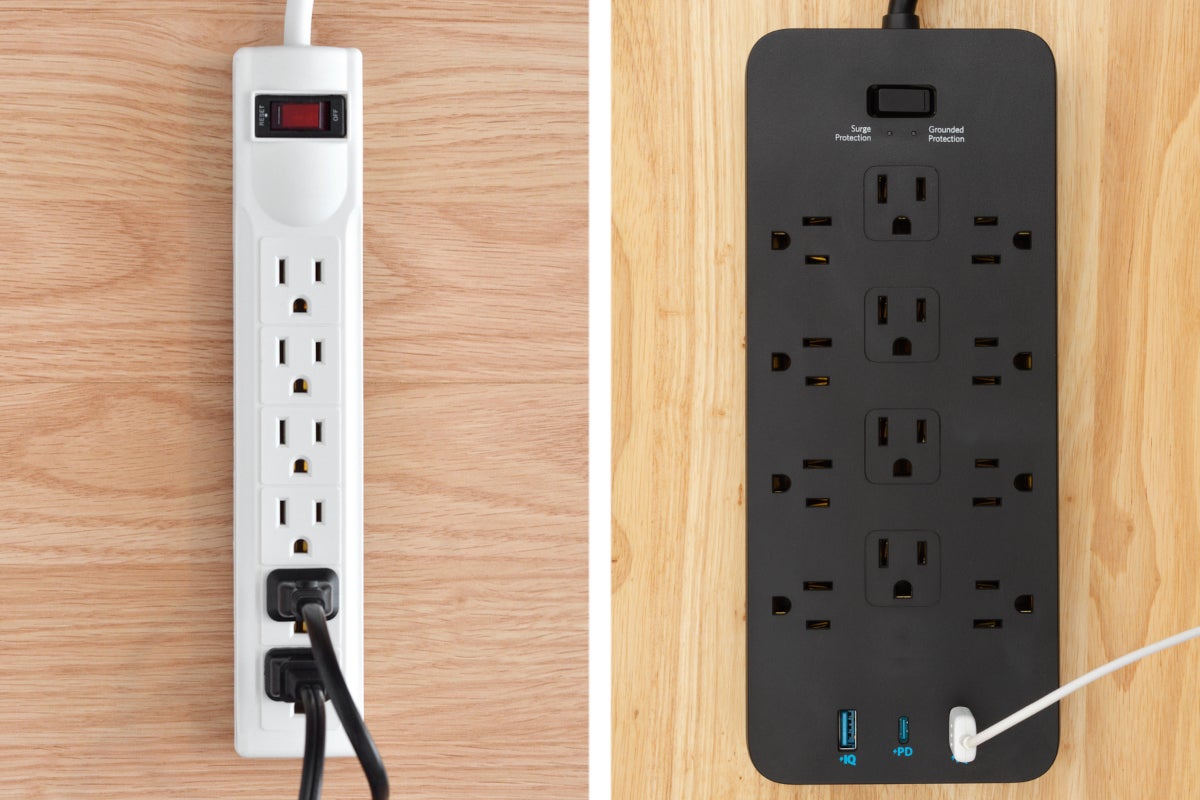In today’s digital age, our homes are filled with a myriad of electronic gadgets, from big-screen TVs to gaming consoles, home theater systems, and everything in between. While we invest a considerable amount of money in acquiring these devices, we often overlook a crucial aspect of maintaining and protecting them: power management. This is where surge protectors and power strips come into play.
In this comprehensive guide, we will explore the importance of surge protectors and power strips, their differences, how to choose the right ones for your setup, and tips on using them effectively. Whether you’re a tech enthusiast or just want to safeguard your investments, this article is a must-read.
Understanding Surge Protectors
What is a Surge Protector?
A surge protector is a device designed to protect your electronic equipment from voltage spikes and power surges. These sudden increases in voltage can occur due to various reasons, including lightning strikes, power grid fluctuations, and even turning on or off high-powered appliances. Surge protectors act as a barrier between your devices and these voltage spikes, diverting excess electricity away from your gadgets and preventing potential damage.
How Surge Protectors Work
Surge protectors are equipped with metal oxide varistors (MOVs) or gas discharge tubes that absorb excess voltage. When the voltage exceeds a certain threshold, these components divert the extra electricity into the grounding wire. This means that your devices are exposed to a consistent, safe level of electricity, protecting them from harm.
The Role of Power Strips
Power Strip vs. Surge Protector: What’s the Difference?
While surge protectors are primarily focused on safeguarding your devices from voltage spikes, power strips serve a different purpose. Power strips are essentially multi-outlet devices that provide additional electrical outlets for your devices. They don’t offer surge protection on their own, but many power strips now come equipped with surge protection features. However, it’s essential to understand that not all power strips offer surge protection, so be sure to check the product specifications before purchasing one.
Choosing the Right Power Strip
When selecting a power strip for your home entertainment setup, consider the number of outlets you need, the type of devices you’ll be connecting, and whether surge protection is a requirement. Look for power strips with surge protection if you want to ensure your gadgets are safe from unexpected electrical surges.
Benefits of Using Surge Protectors and Power Strips
- Protecting Your Electronics
The most obvious benefit of using surge protectors and power strips is the protection they provide to your electronic gadgets. Voltage spikes can wreak havoc on sensitive devices like televisions, gaming consoles, and sound systems. By investing in these accessories, you safeguard your electronics from potential damage and extend their lifespan.
- Convenience and Organization
Power strips and surge protectors help streamline your home entertainment setup. They provide multiple outlets in one compact unit, reducing cable clutter and making it easier to connect all your devices. You can also find power strips with features like built-in USB ports for charging smartphones and tablets, further enhancing convenience.
- Fire Prevention
Electrical surges can lead to overheating and electrical fires. Surge protectors are equipped to detect and prevent such risks by cutting off power when necessary. This added safety feature not only protects your devices but also your home.
- Cost-Effective Protection
Compared to the cost of replacing damaged electronic devices, surge protectors and power strips are a cost-effective investment. They offer peace of mind and a level of protection that can save you money in the long run.
How to Choose the Right Surge Protector
- Joule Rating
The joule rating of a surge protector indicates its capacity to absorb energy from surges. Higher joule ratings mean better protection. For sensitive electronics like computers and home theater systems, opt for surge protectors with a high joule rating.
- Clamping Voltage
Clamping voltage is the voltage at which the surge protector reacts to divert excess electricity. Lower clamping voltages are better as they respond faster to surges. Look for a surge protector with a clamping voltage below 400V for optimal protection.
- Response Time
The response time of a surge protector is crucial. Look for a unit with a response time measured in nanoseconds for swift protection against sudden surges.
- Number of Outlets
Consider how many devices you need to connect to the surge protector. Ensure it has enough outlets to accommodate all your equipment without overloading the unit.
- Warranty
Check for a manufacturer’s warranty, as it can provide added peace of mind regarding the product’s quality and effectiveness.
Using Surge Protectors and Power Strips Effectively
- Avoid Daisy Chaining
Daisy chaining involves connecting multiple power strips or surge protectors in series. This practice can overload the circuit and increase the risk of electrical fires. Instead, use a single surge protector with enough outlets to meet your needs.
- Regularly Inspect and Replace
Surge protectors have a finite lifespan. Over time, their components wear out, making them less effective. Be sure to inspect your surge protectors for any visible damage and replace them if they show signs of wear and tear.
- Unplug During Storms
During severe storms with lightning, it’s advisable to unplug your devices or switch off the surge protector to prevent potential damage from lightning-induced power surges.
- Label Your Cords
To keep your home entertainment setup organized and make it easier to identify which device is connected to which outlet, label your cords. This makes troubleshooting and reconfiguration more convenient.
Conclusion
Surge protectors and power strips may not be the most glamorous components of your home entertainment setup, but they are indispensable for the protection and functionality of your electronics. By investing in high-quality surge protectors and power strips and using them effectively, you can ensure your gadgets remain safe and your entertainment experiences uninterrupted. Don’t wait until a power surge ruins your expensive equipment; take proactive steps to protect and enhance your home entertainment system today.



